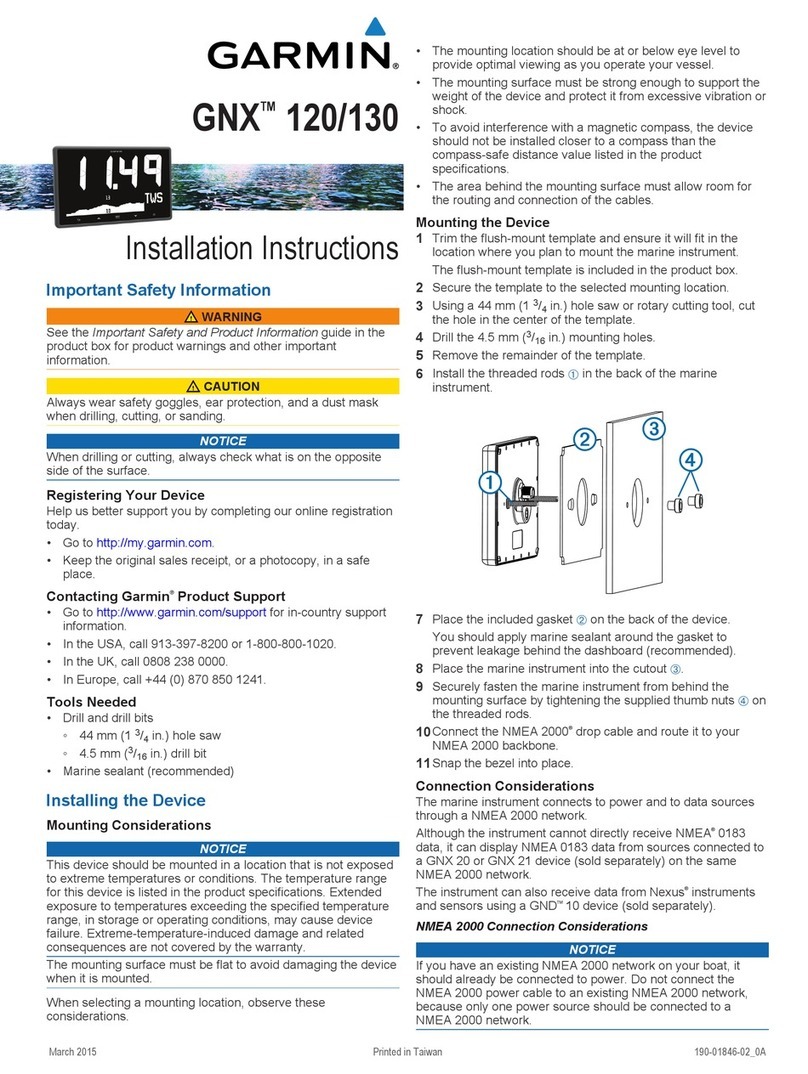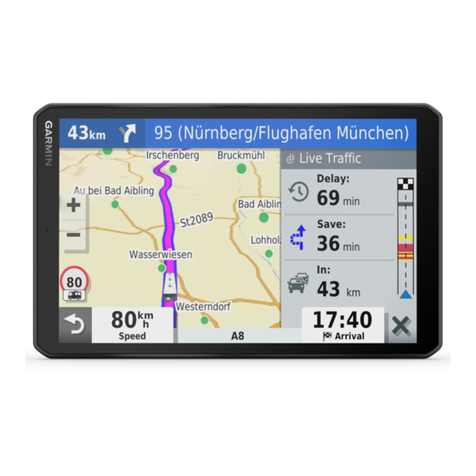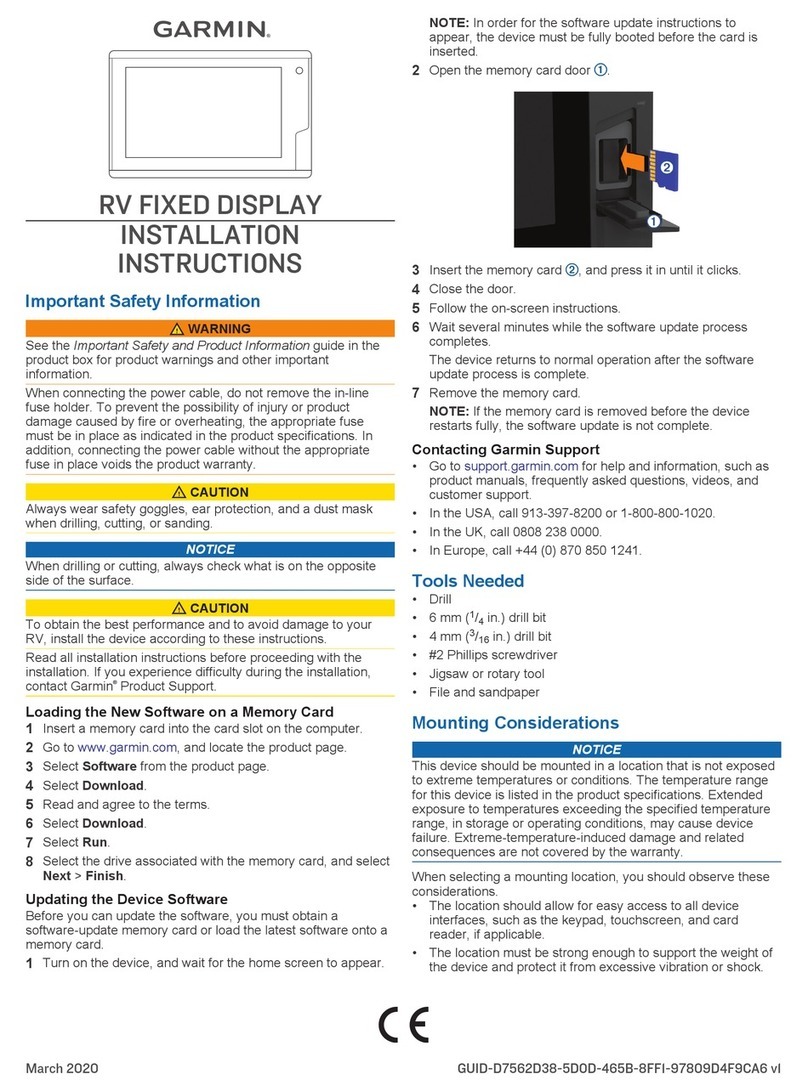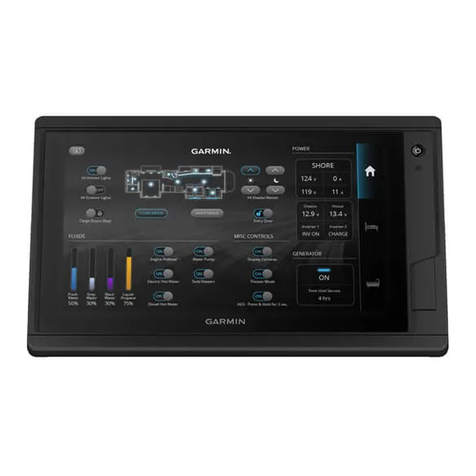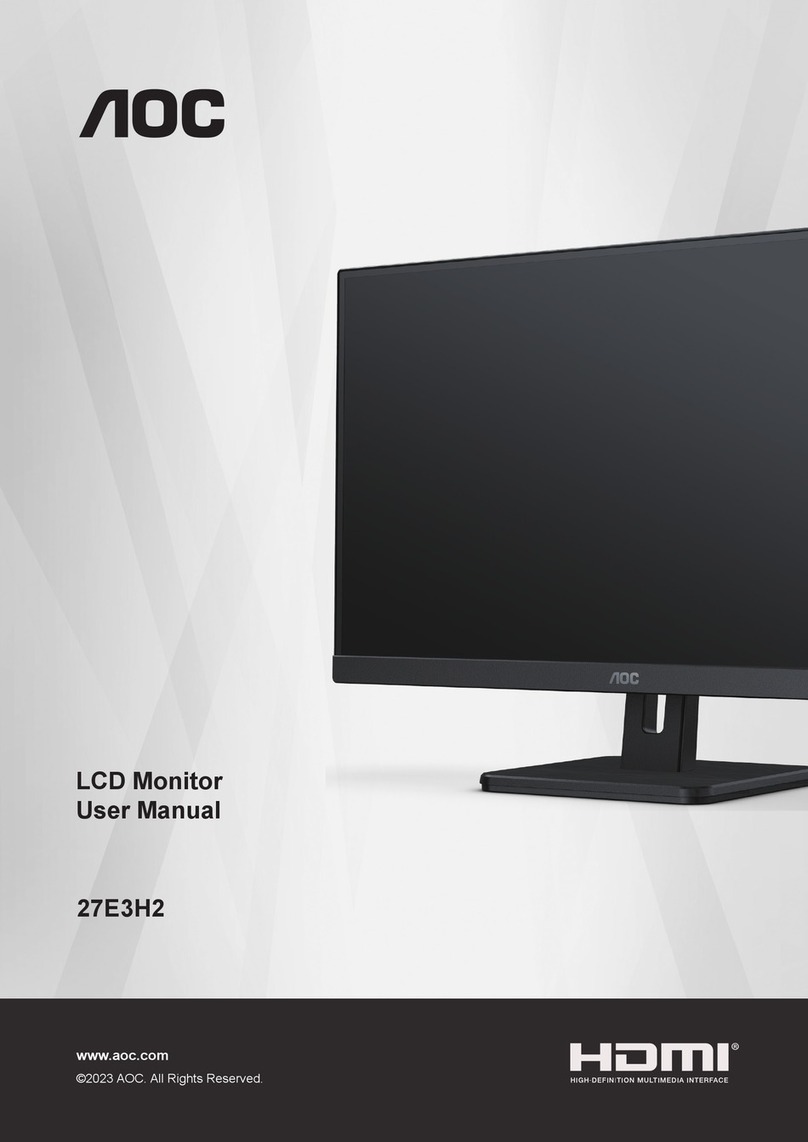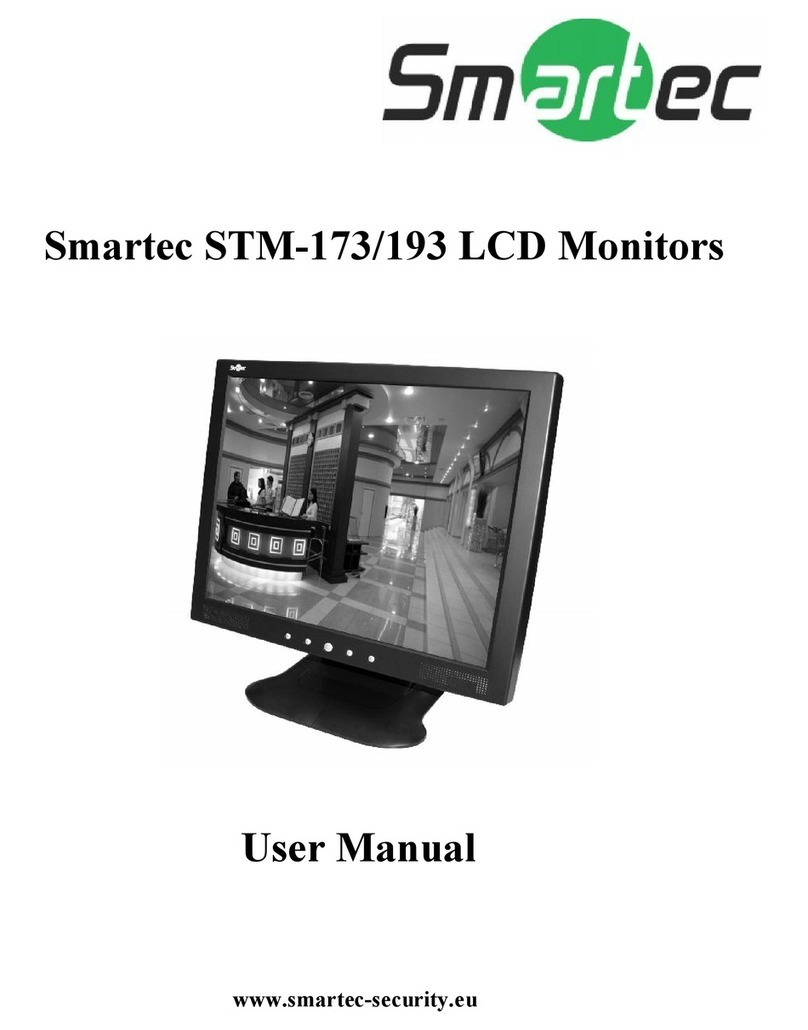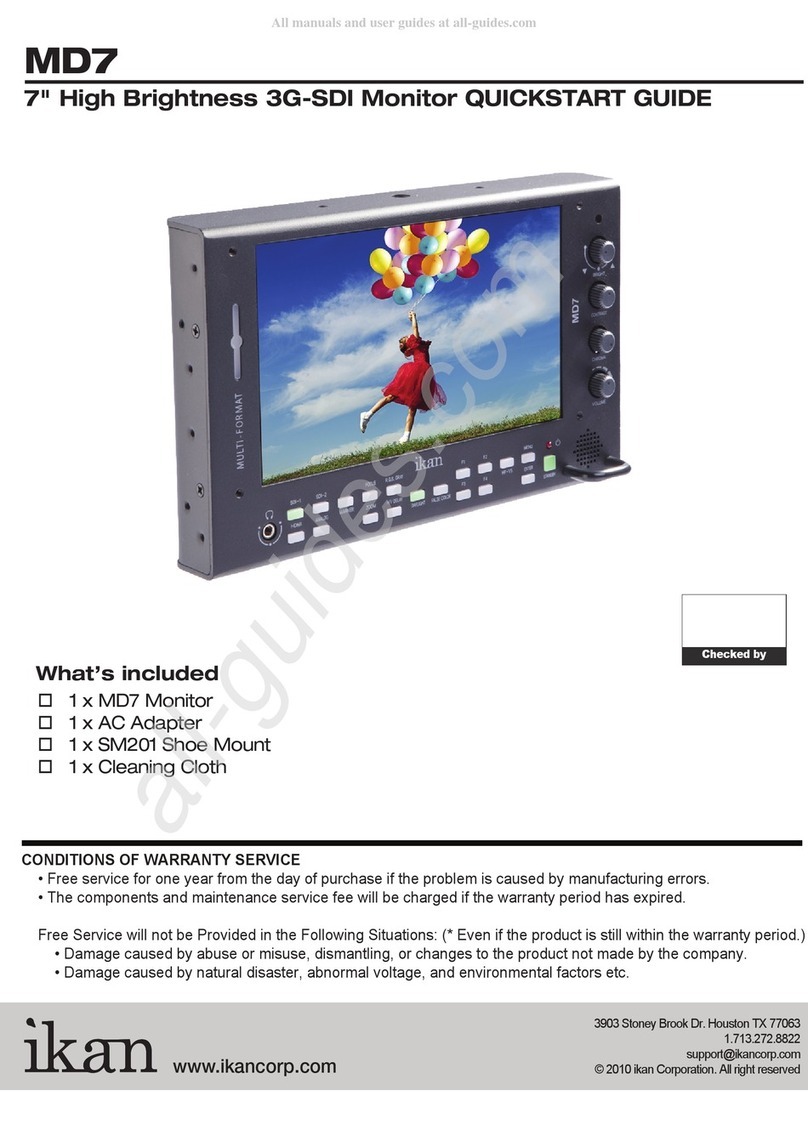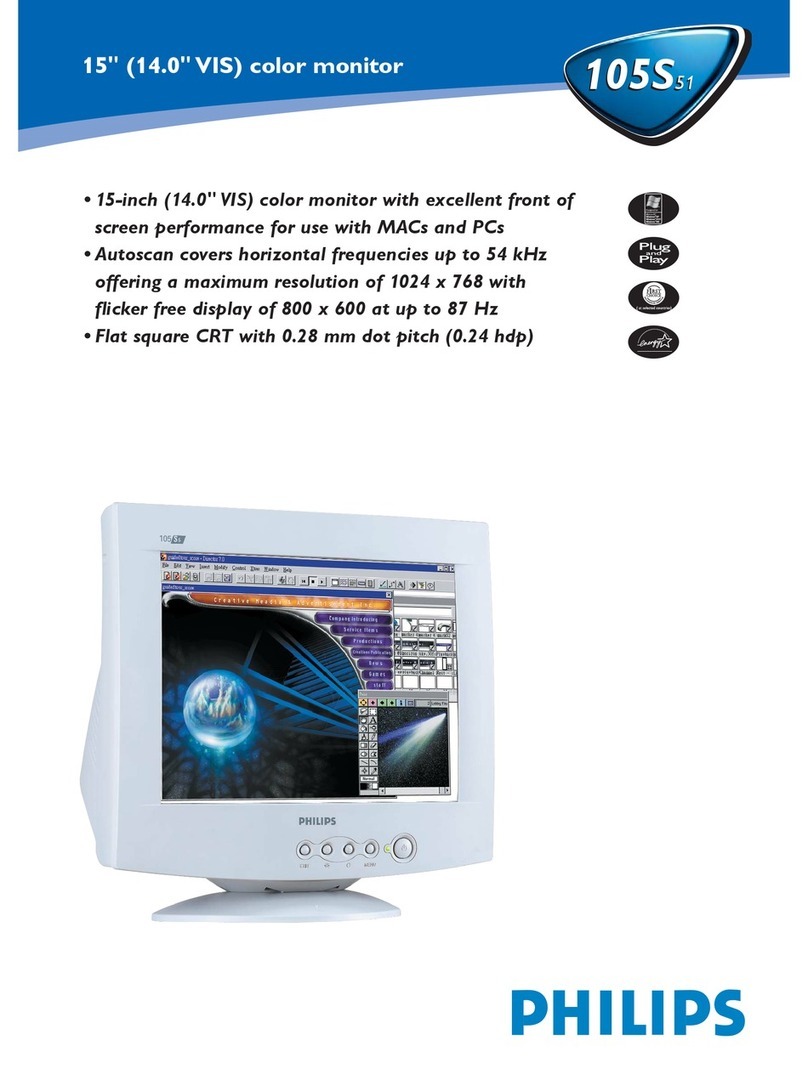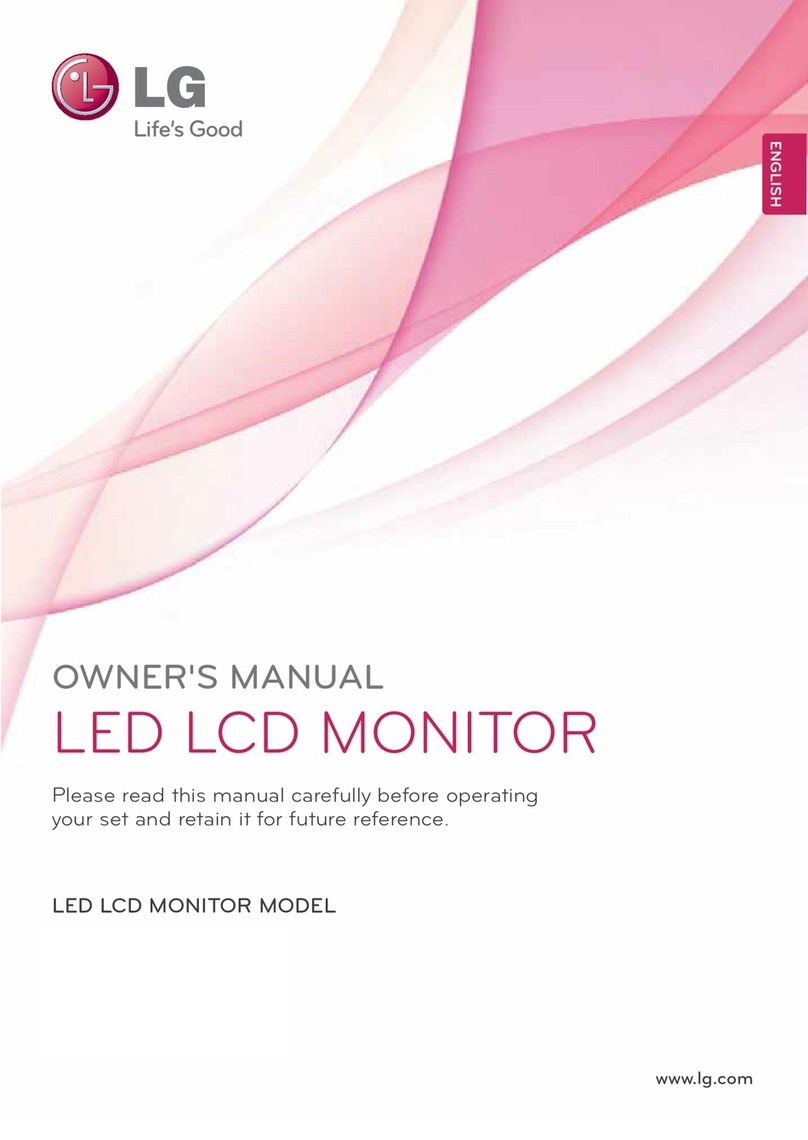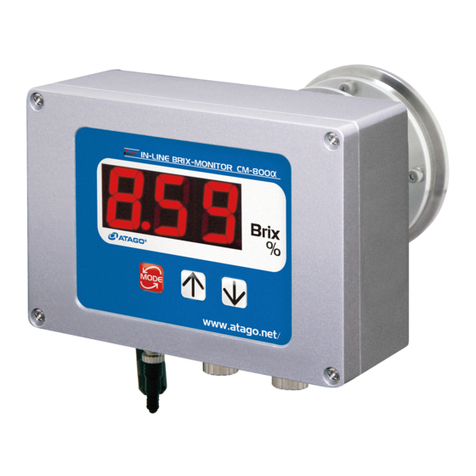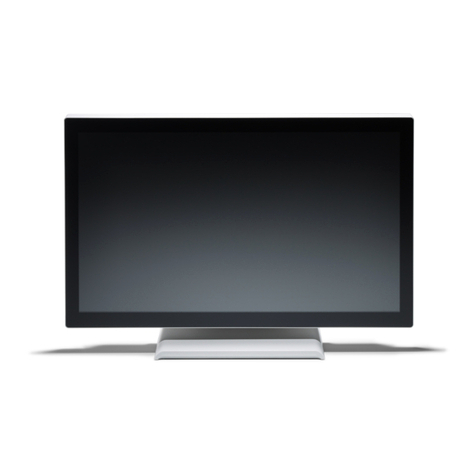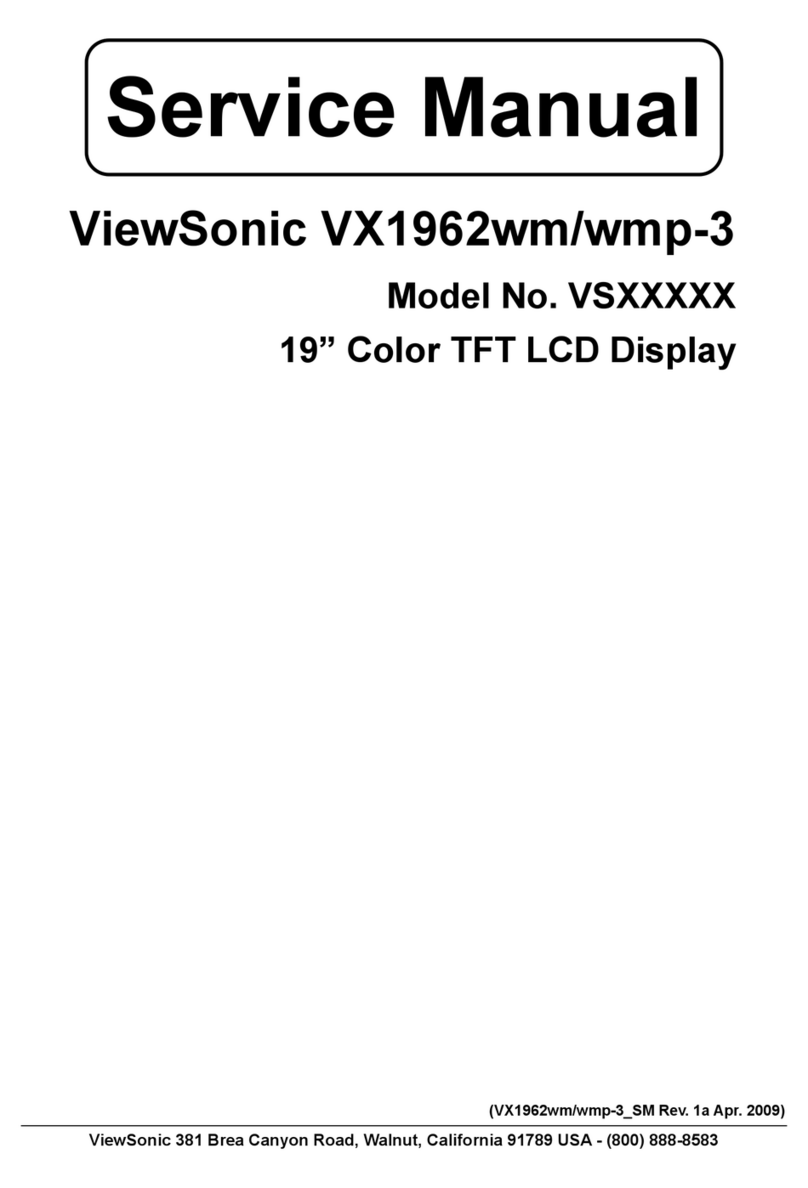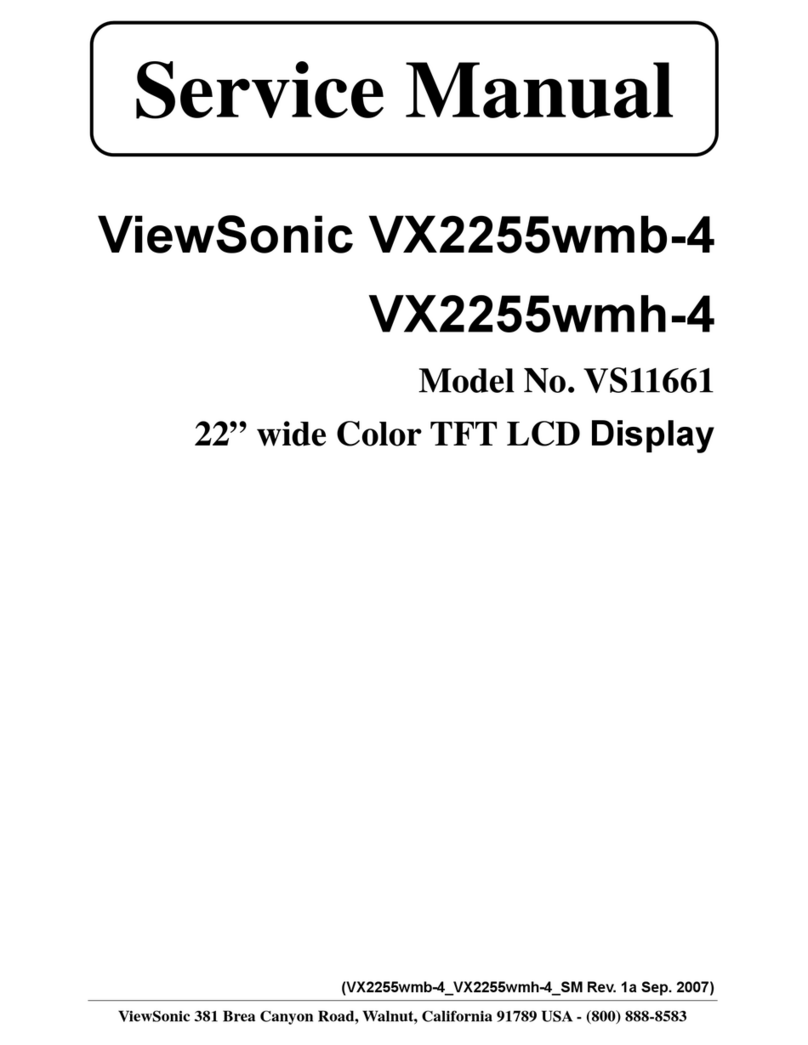Garmin TD 50 User manual

TD 50
INSTALLATION
INSTRUCTIONS
Important Safety Information
WARNING
Failure to follow these warnings, cautions, and notices could
result in personal injury, damage to the vessel or device, or poor
product performance.
See the Important Safety and Product Information guide in the
product box for product warnings and other important
information.
CAUTION
To avoid possible personal injury, always wear safety goggles,
ear protection, and a dust mask when drilling, cutting, or
sanding.
To avoid possible personal injury or damage to the device and
vessel, disconnect the vessel's power supply before beginning
to install the device.
To avoid possible personal injury or damage to the device or
vessel, before applying power to the device, make sure that it
has been properly grounded, following the instructions in the
guide.
NOTICE
For the best possible performance, the device must be installed
according to these instructions.
When drilling or cutting, always check what is on the opposite
side of the surface to avoid damaging the vessel.
Tools Needed
• Drill and drill bits
◦ 9 mm (3/8 in.) drill bit, to prepare the surface for cutting
◦ 2.5 mm (3/32 in.) drill bit, if using wood screws
◦ 3.5 mm (9/64 in.) drill bit, if using the nut plate
◦ 4 mm (5/32 in.) drill bit, if using the nut plate
• #2 Phillips screwdriver
• Jigsaw or rotary tool
• File and sandpaper
• Marine sealant (recommended)
Mounting Considerations
NOTICE
This device should be mounted in a location that is not exposed
to extreme temperatures or conditions. The temperature range
for this device is listed in the product specifications. Extended
exposure to temperatures exceeding the specified temperature
range, in storage or operating conditions, may cause device
failure. Extreme-temperature-induced damage and related
consequences are not covered by the warranty.
The mounting surface must be flat to avoid damaging the device
when it is mounted.
When selecting a mounting location, observe these
considerations.
• The mounting location should be at or below eye level to
provide optimal viewing as you operate your vessel.
• The mounting surface must be strong enough to support the
weight of the device and protect it from excessive vibration or
shock.
• To avoid interference with a magnetic compass, the device
should not be installed closer to a compass than the
compass-safe distance value listed in the product
specifications.
• The area behind the mounting surface must allow room for
the routing and connection of the cables.
The included template and hardware can be used to flush mount
the device in your dashboard. There are two options for
hardware based on the mounting surface material.
• You can drill pilot holes and use the included wood screws.
• You can drill holes and use the included nut plates and
machine screws. The nut plates can add stability to a thinner
surface.
Mounting the Device
NOTICE
Be careful when cutting the hole to flush mount the device.
There is only a small amount of clearance between the case and
the mounting holes, and cutting the hole too large could
compromise the stability of the device after it is mounted.
To avoid potential damage to the device, use only the included
screws to mount it. Using screws other than the ones included
will void your warranty.
The included template and hardware can be used to flush mount
the device in your dashboard. There are two options for
hardware based on the mounting surface material.
• You can drill pilot holes and use the included wood screws.
• You can drill holes and use the included nut plates and
machine screws. The nut plates can add stability to a thinner
surface.
1Trim the template and make sure it fits in the location where
you want to mount the device.
2Secure the template to the selected location.
3Using a 9 mm (3/8 in.) drill bit, drill one or more of the holes
inside the corners of the solid line on the template to prepare
the mounting surface for cutting.
4Using a jigsaw or rotary tool, cut the mounting surface along
the inside of the solid line indicated on the template.
5Place the device in the cutout to test the fit.
6If necessary, use a file and sandpaper to refine the size of
the cutout.
7After the device fits correctly in the cutout, ensure the
mounting holes on the device line up with the holes on the
template.
8If the mounting holes on the device do not line up, mark the
new hole locations.
9Based on your mounting method, drill the outer holes on the
template:
• Drill 2.5 mm (3/32 in.) pilot holes for the included wood
screws, and skip to step 18.
• Drill 3.5 mm (9/64 in.) holes for the included nut plate and
machine screws.
10If using the nut plates, starting in one corner of the template,
place a nut plate over the hole drilled in the previous
step.
GUID-0E4EF44F-C334-4343-867C-0A6410D364DB v1April 2020

The other hole on the nut plate should line up with the
inner 4 mm (5/32 in.) hole on the template.
11If the 4 mm (5/32 in.) hole on the nut plate does not line up
with the inner hole on the template, mark the new location.
12Repeat steps 10 and 11 for each nut plate.
13Using a 4 mm (5/32 in.) drill bit, drill the inner holes.
14Remove the template from the mounting surface.
15Starting in one corner of the mounting location, place a nut
plate on the back of the mounting surface, lining up the
inner and outer holes.
The raised portion of the nut plate should fit into the inner
hole.
16Secure the nut plate to the mounting surface by fastening an
included M3 pan-head screw through the inner 4 mm
(5/32 in.) hole.
17Repeat steps 15 and 16 for each of the nut plates along the
top and bottom of the device.
18Install the gasket pieces on the back of the device.
The pieces of the rubber gasket have adhesive on the back.
Make sure you remove the protective liner before installing
them on the device.
19If you will not have access to the back of the device after you
mount it, connect all necessary cables to the device before
placing it into the cutout.
20Place the device into the cutout.
21Secure the device to the mounting surface using the included
M3 flat-head screws or wood screws , depending on the
mounting method.
22Snap the trim caps into place over the screws.
Connection Considerations
This device connects to power and to some data sources
through a NMEA 2000® network.
You must connect this device to Garmin® Marine Network
devices using a nine-pin Garmin Marine Network cable (sold
separately). You must use an adapter to connect to Garmin
network devices that have a larger connector (sold separately).
NOTE: This device must be connected to the Garmin Marine
Network with one or more compatible Garmin chartplotters also
connected. This device will not function as a stand-alone device.
NMEA 2000 Connection Considerations
NOTICE
If you are connecting to an existing NMEA 2000 network,
identify the NMEA 2000 power cable. Only one NMEA 2000
power cable is required for the NMEA 2000 network to operate
properly.
A NMEA 2000 Power Isolator (010-11580-00) should be used in
installations where the existing NMEA 2000 network
manufacturer is unknown.
If you are installing a NMEA 2000 power cable, you must
connect it to the boat ignition switch or through another in-line
switch. NMEA 2000 devices will drain your battery if the NMEA
2000 power cable is connected to the battery directly.
The marine instrument connects to a NMEA 2000 network on
your boat. The NMEA 2000 network provides power to the
marine instrument and data from NMEA 2000 devices such as a
wind sensor. The included NMEA 2000 cables and connectors
allow you to either connect the device to your existing NMEA
2000 network or create a basic NMEA 2000 network if needed.
If you are unfamiliar with NMEA 2000, you should read the
“NMEA 2000 Network Fundamentals” chapter of the Technical
Reference for NMEA 2000 Products. To download the
reference, go to dealers.garmin.com.
NMEA 2000 antenna
Marine instrument
Ignition or in-line switch
NMEA 2000 power cable
NMEA 2000 drop cable
12 Vdc power source
NMEA 2000 terminator or backbone cable
NMEA 2000 T-connector
NMEA 2000 terminator or backbone cable
Specifications
Dimensions without sun cover
(H × W × D)
105 x 140 x 51 mm (4.13 x 4.51 x
2.01 in.)
Dimensions with sun cover (H ×
W × D)
113 x 144 x 56 mm (4.45 x 5.67 x
2.20 in.)
Weight without sun cover 328 g (11.57 oz.)
Weight with sun cover 375 g (13.23 oz.)
Temperature range From 5° to 131°F (from -15° to 55°C)
Compass-safe distance 20 cm (7.87 in.)
Case material Fully-gasketed polycarbonate
Lens material Glass with an anti-glare and anti-
fingerprint finish
2

Water rating IEC 60529 IPX71
Brightness 1200 cd/m2 (NIT)
Power usage 5.85 W max
NMEA 2000 input voltage 9 to 16 Vdc
NMEA 2000 LEN @ 9 Vdc 13 (650 mA)
NMEA 2000 PGN Information
Type PGN Description
Transmit and receive 059392 ISO acknowledgment
059904 ISO request
060928 ISO address claim
61184 Product information
126208 NMEA®: Command, request, and
acknowledge group function
126996 Product information
Transmit 126464 Transmit PGN list group function
Receive 126992 System time
127245 Rudder
127250 Vessel heading
127488 Engine parameters: Rapid update
127489 Engine parameters: Dynamic
127508 Battery status
128259 Speed: Water referenced
128267 Water depth
129025 Position: Rapid update
129026 COG and SOG: Rapid update
129029 GNSS position data
129283 Cross track error
129284 Navigation data
129285 Navigation route and waypoint info
129539 GNSS dilution of precision (DOP)
130306 Wind data
130310 Environmental parameters
130311 Environmental parameters
130312 Temperature
130313 Humidity
130314 Actual pressure
© 2020 Garmin Ltd. or its subsidiaries
Garmin® and the Garmin logo are trademarks of Garmin Ltd. or its subsidiaries,
registered in the USA and other countries. These trademarks may not be used without
the express permission of Garmin.
NMEA®, NMEA 2000®, and the NMEA 2000 logo are registered trademarks of the
National Marine Electronics Association.
1 The device withstands incidental exposure to water of up to 1 m for up to 30 min.
For more information, go to www.garmin.com/waterrating.
3

© 2020 Garmin Ltd. or its subsidiaries support.garmin.com
Other manuals for TD 50
2
Other Garmin Monitor manuals
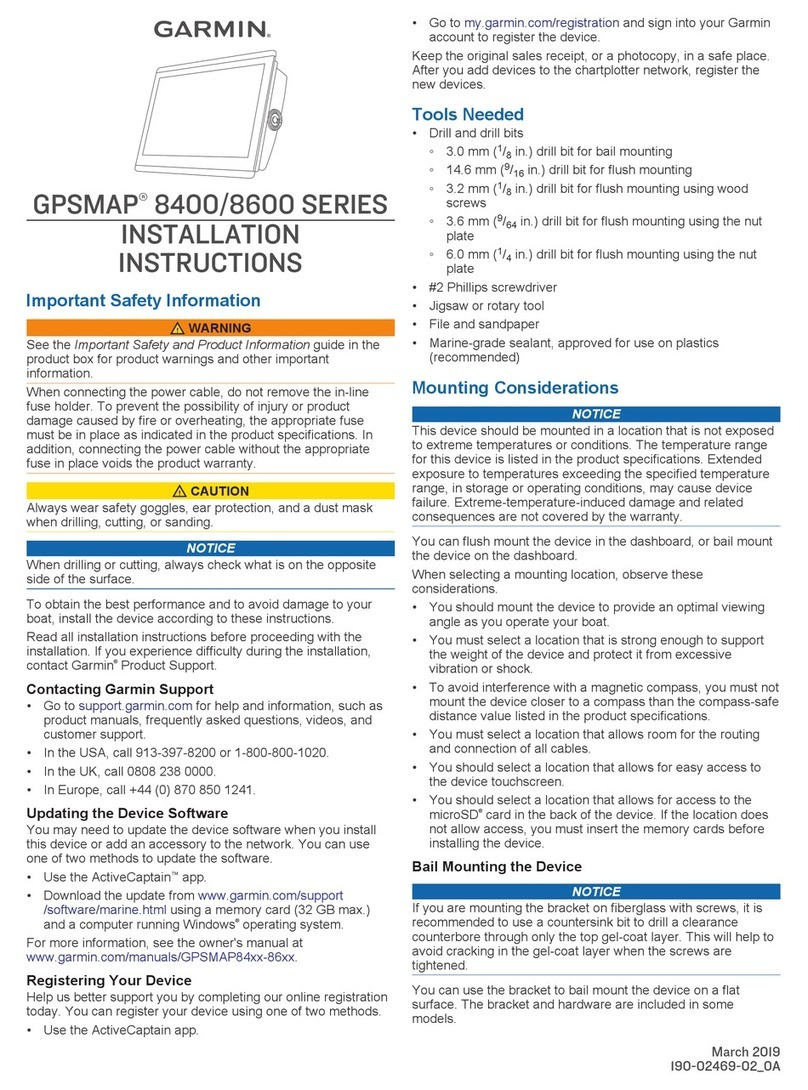
Garmin
Garmin GPSMAP 8400 series User manual
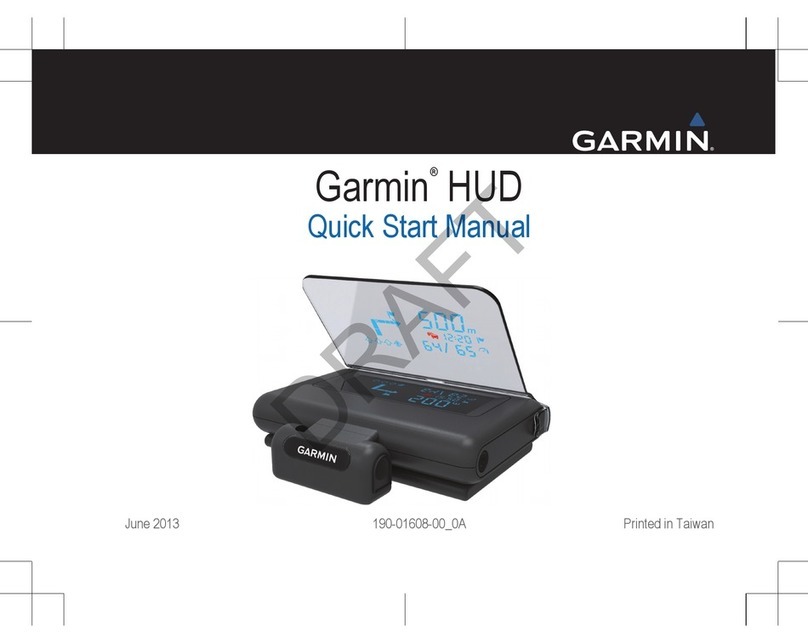
Garmin
Garmin HUD Instruction manual
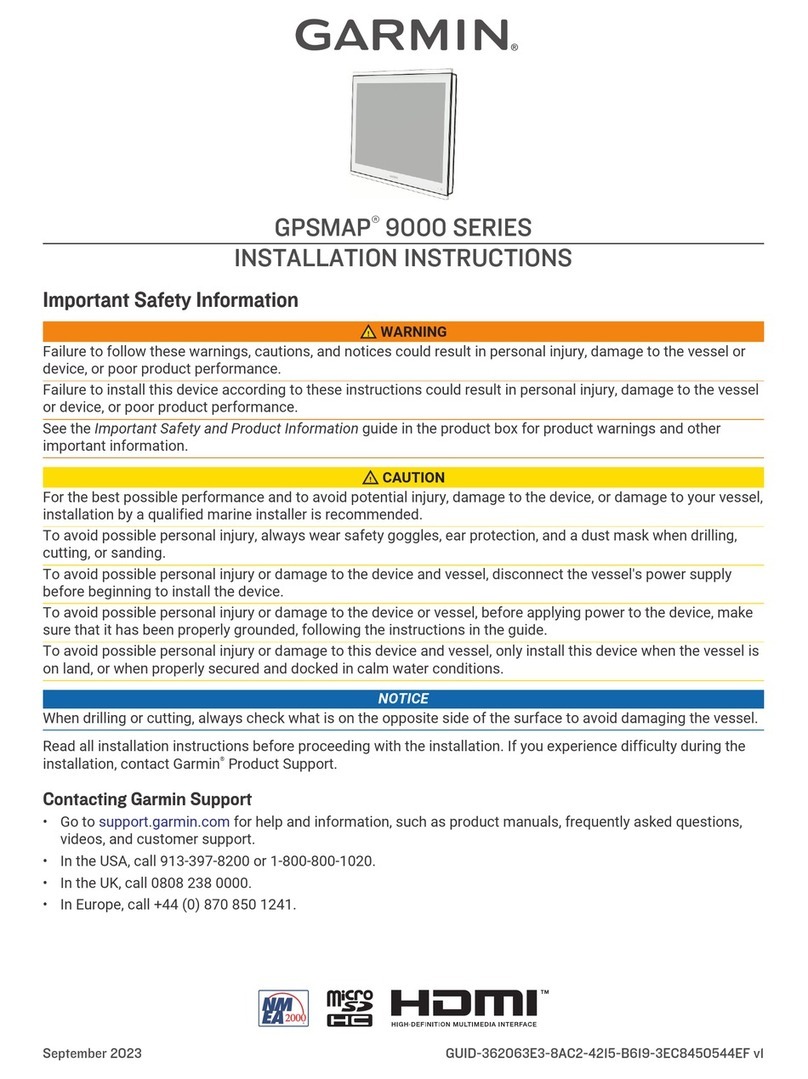
Garmin
Garmin GPSMAP 9000 Series User manual
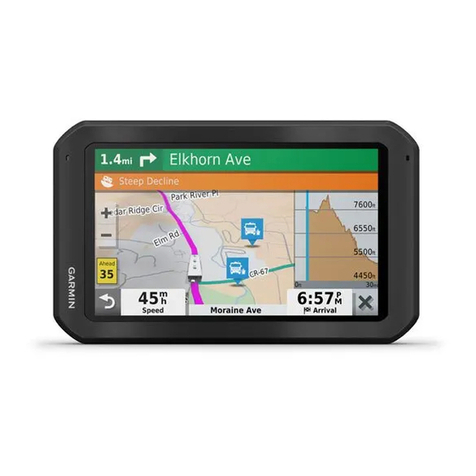
Garmin
Garmin VIEO RV 752 Instruction manual

Garmin
Garmin GPSMAP 16X3 User manual
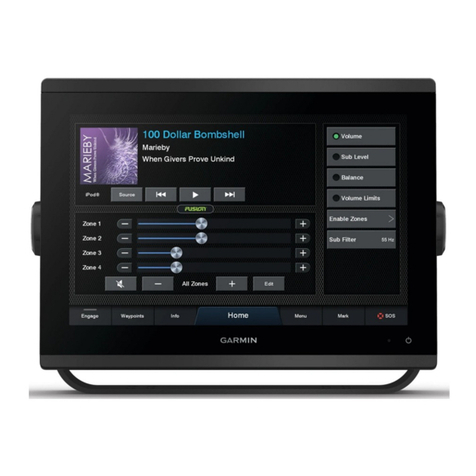
Garmin
Garmin GPSMAP 7X3 User manual
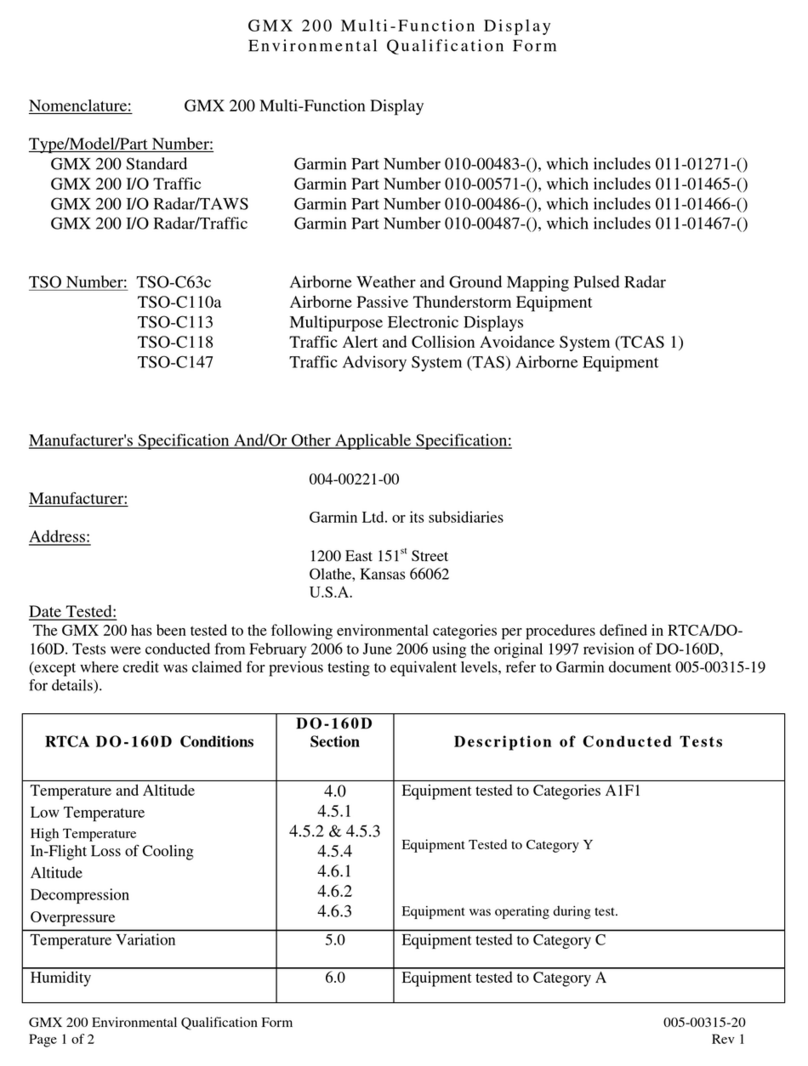
Garmin
Garmin GMX 200 User manual
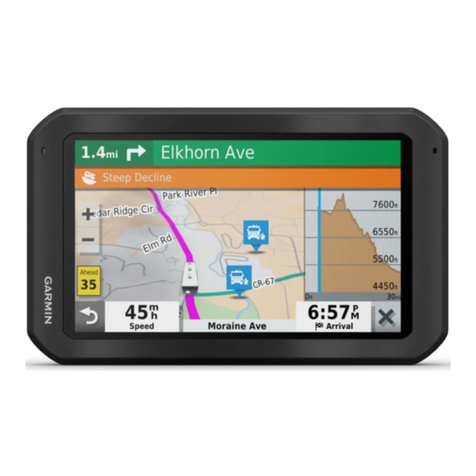
Garmin
Garmin VIEO RV 751 Instruction manual
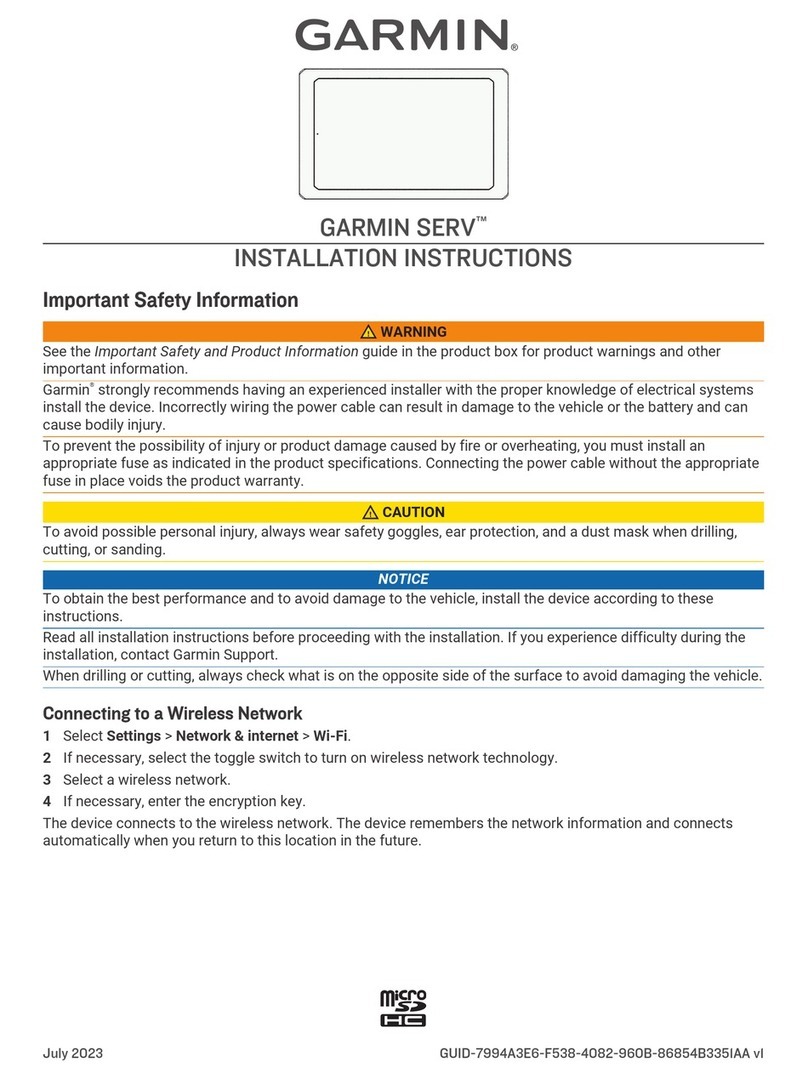
Garmin
Garmin SERV User manual

Garmin
Garmin TD 50 User manual
